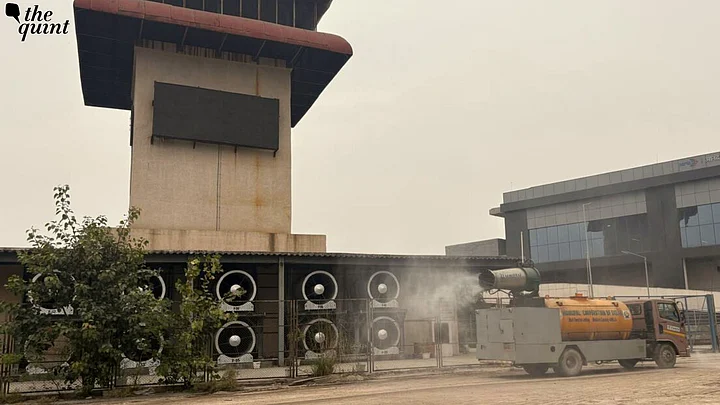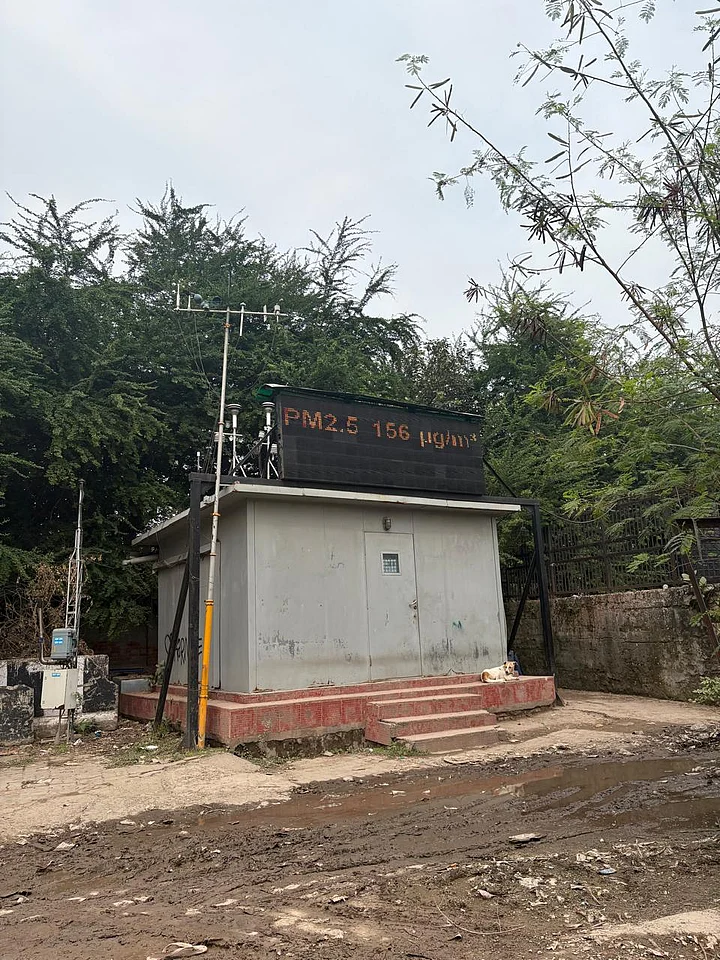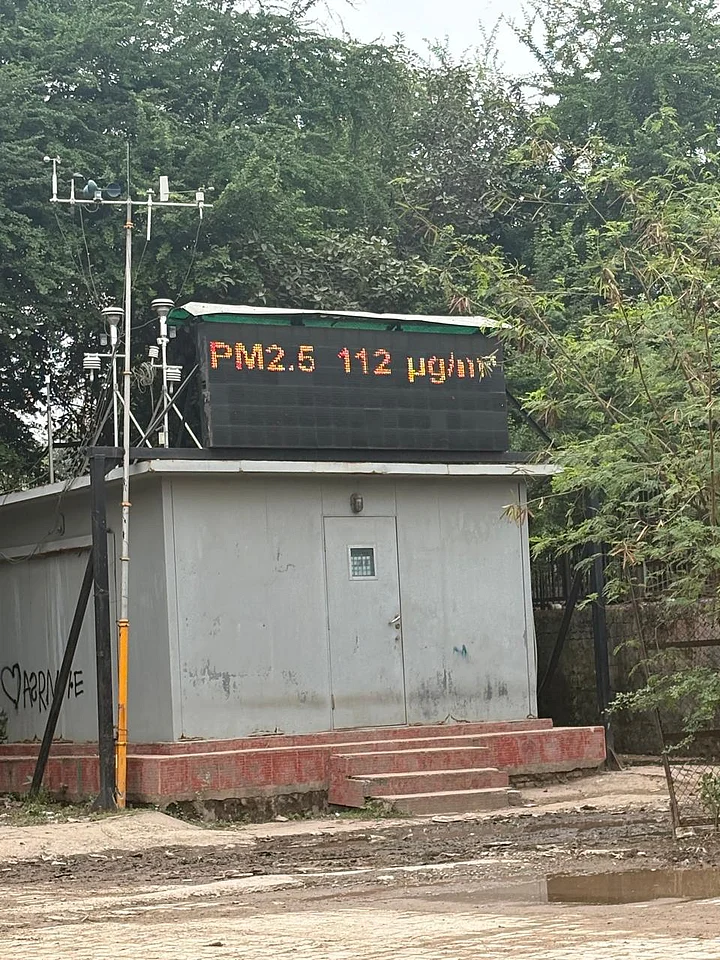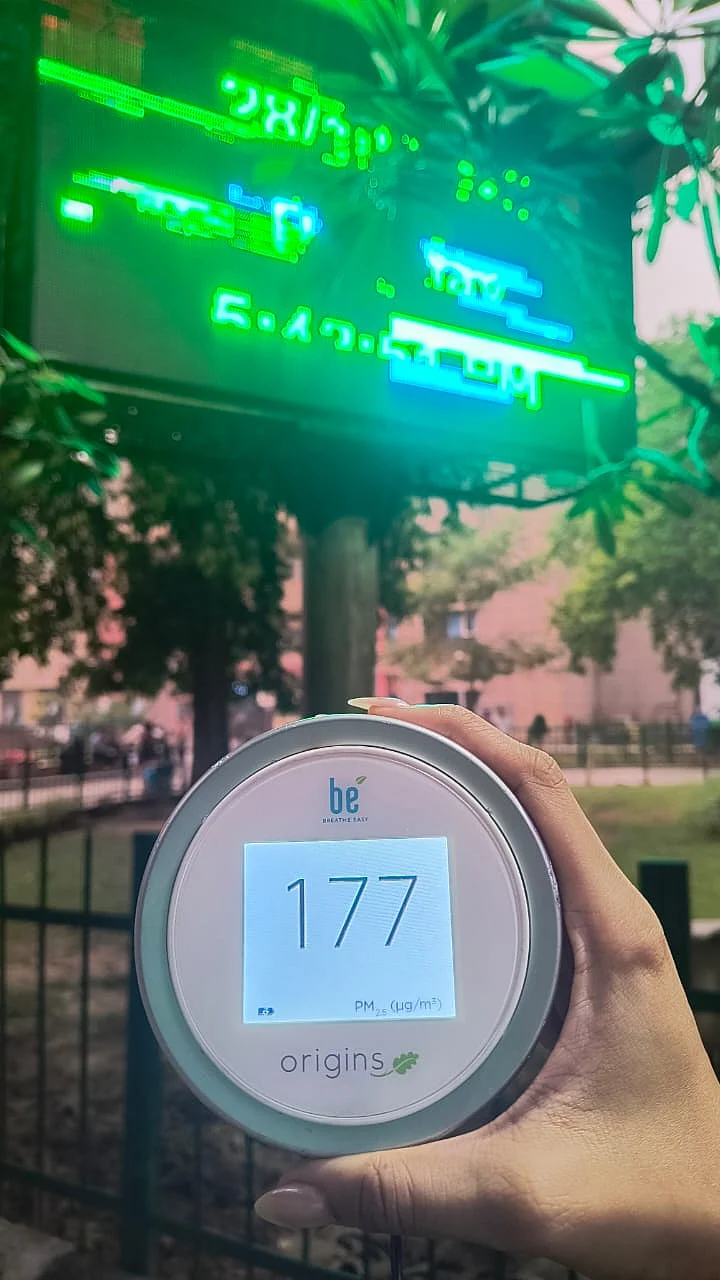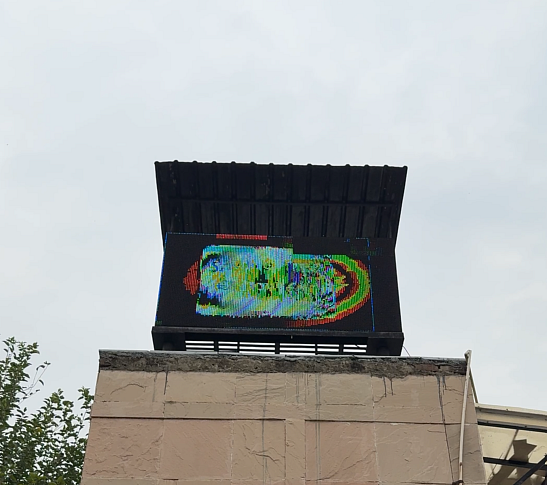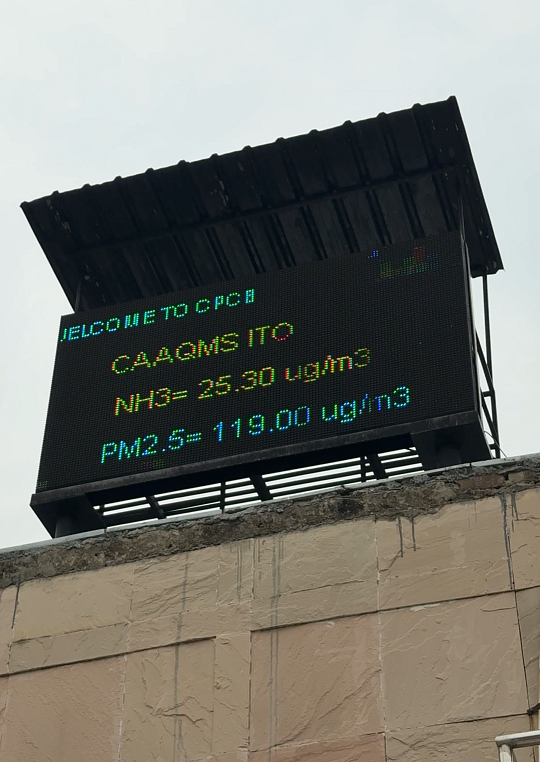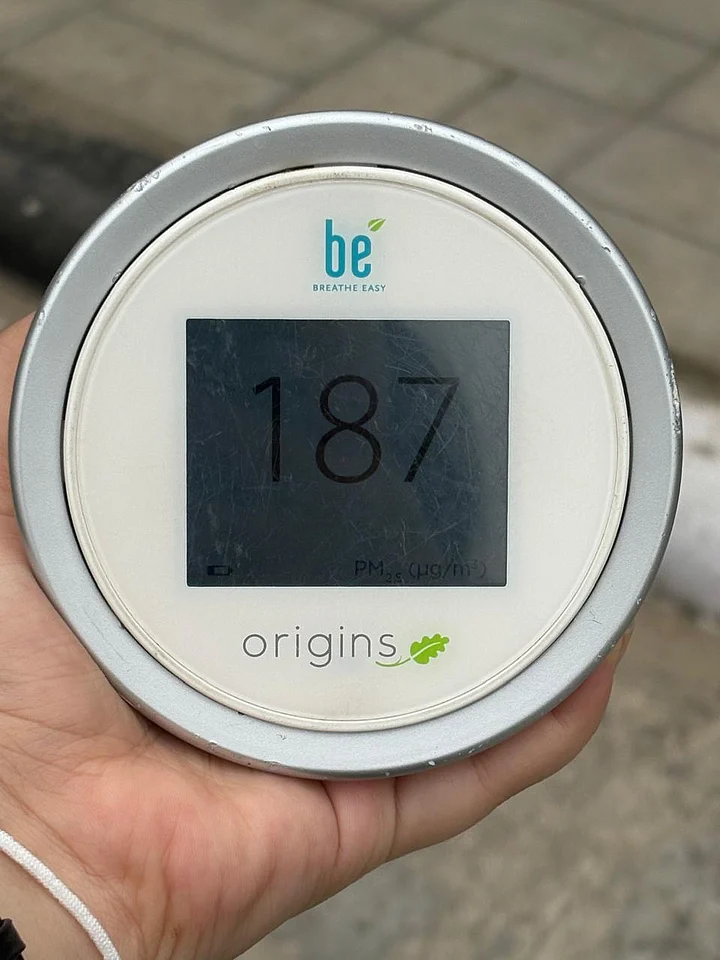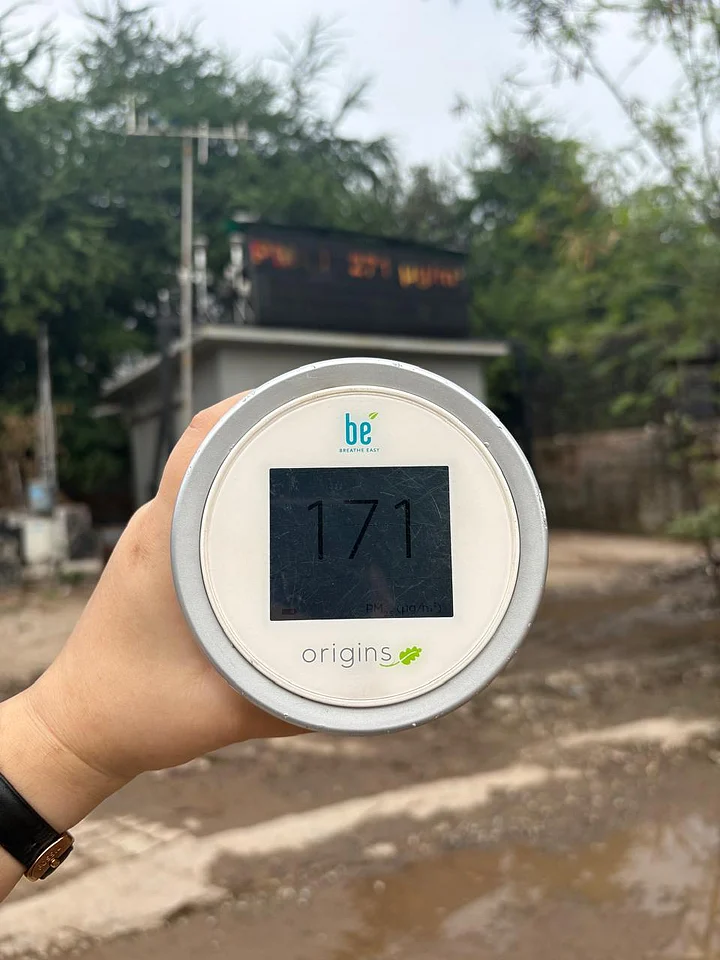Another day, and Delhi remains, yet again, shrouded in a thick blanket of smog.
The capital continues to experience ‘very poor’ air quality in most areas, with AQI levels exceeding 300 in at least 23 of the city’s 38 monitoring stations.
Questions, however, have also been raised about the accuracy of the government’s Air Quality Index (AQI) data — the very numbers meant to tell people how toxic the air really is.
To find out more about how this data is being collected, processed, and displayed, The Quint visited several air quality monitoring stations across Delhi.
Are Water Sprinkers Being Used to Manipulate AQI Readings?
Questions about the accuracy of Delhi’s air quality data began to surface after a video posted by the Aam Aadmi Party (AAP) last week showed water tankers sprinkling water around the Anand Vihar monitoring station.
Anand Vihar is known to consistently record some of the highest AQI levels in the city. According to SAMEER, a mobile app developed by the Central Pollution Control Board (CPCB) , Anand Vihar recorded an AQI of 423 on 19 October, the eve of Diwali, and 404 on 20 October. However, it saw a decline in the AQI over the next couple of days when the city was visibly more polluted than it had been the days prior.
When The Quint visited the Anand Vihar Inter State Bus Terminal (ISBT), where the monitoring station is situated, on the morning of 28 October, the team recorded PM2.5 levels of 284 µg/m³ at 10:50 am. There were no signs of dampness on the ground or evidence that water sprinklers had been used in the area so far that day.
A short while later, at around 11:00 am, the reporters saw a water tanker making repeated rounds—twice inside the bus terminus and once outside—sprinkling water across the area. This activity was seen three times over a span of about two hours.
When The Quint measured the PM2.5 levels again at 11:23 am, the reading had dropped to 171 µg/m³. By 12:34 pm, it had fallen further to 128 µg/m³.
During this period, there was also a noticeable drop in the PM2.5 levels displayed on the government’s board, readings that were even lower than those recorded by The Quint’s AQI monitor.
Experts say spraying water around monitoring stations can, in fact, temporarily reduce the concentration of pollutants in the air by weighing down particulate matter (PM), causing it to settle and lowering the recorded PM2.5 levels.
“This effect is only temporary—lasting anywhere from a few minutes to a couple of hours, depending on how much and how often water is sprayed,” explained Sunil Dahiya, Founder and Lead Analyst at Envirocatalysts.
Dahiya added that even with continuous water spraying, the drop in readings would be limited—around 50 to 100 µg/m³—as overall pollution levels in Delhi is currently extremely high.
Vendors and auto drivers outside the bus terminus alleged to The Quint that water sprinkler trucks had been making frequent rounds in and around the ISBT area daily since Diwali.
Speaking to The Quint, a driver of one of the water sprinkler trucks, confirmed that these trucks had been frequenting around the air quality monitor every day post Diwali "to reduce air pollution".
Is This Happening Everywhere?
To find out whether similar water-sprinkling was taking place at other monitoring stations, The Quint visited five more of them—including monitoring stations at Mathura Road, Aurobindo Marg, Jawaharlal Nehru Stadium, Siri Fort, and ITO. However, none of these locations showed evidence of active water sprinkling on 28 October.
At Mathura Road, a local shopkeeper outside the Central Road Research Institute that houses the station, however, said tankers "pass by almost every day, once or twice a day." He added that he had spotted a water sprinkler sprinkling the highway outside around 9 am the same day.
At Aurobindo Marg, the security guard at the National Institute of Tuberculosis and Respiratory Diseases (which houses one of the monitoring stations) said water tankers regularly sprinkle the main road outside several times a day, but do not enter the premises. A nearby shopkeeper confirmed this. Inside the campus, the operator managing the monitoring station also said that no tankers enter the area to spray water near the equipment.
These instances could just be part of the Delhi government’s GRAP-I and GRAP-II (Graded Response Action Plan) measures that include routine road sprinkling to control dust pollution. Data from the SAMEER app suggest that air quality did inexplicably improve for a couple of days after Diwali (between 23 and 25 October) before spiking again.
Lack of Transparency, and Discrepancies in Data
Some monitoring stations that The Quint visited were hard to locate as they were either located within gated establishments that restrict public entry, or were simply difficult to find.
For instance, at Siri Fort, The Quint couldn’t access the monitoring station as it was located inside the sports complex, which restricts entry. At Jawaharlal Nehru Stadium, although open to the public, the station couldn’t be found at all—there were no signs or directions, and even people working at the stadium were unaware of its location.
At multiple sites, The Quint also found that display boards showing AQI data were either broken, malfunctioning, or displaying incorrect readings.
At the National Institute of Tuberculosis and Respiratory Diseases campus on Delhi’s Aurobindo Marg, the display board was malfunctioning, with most numbers barely visible, and those that were visible were far lower.
The Quint’s AQI meter showed a real-time PM2.5 reading of 177 µg/m³, while the board displayed just 85 µg/m³.
A similar problem was noticed at the ITO display board, which was glitching from time to time, and displaying a PM2.5 reading of 119 µg/m³, far lower than the 187 µg/m³ recorded by The Quint.
The difference wasn’t as stark, but at Anand Vihar too, the board displayed a PM2.5 reading of 156 µg/m³, while The Quint’s AQI meter recorded 171 µg/m³.
Beyond the Optics: Why These Numbers Matter
The discrepancy in accurate AQI reporting isn’t just about numbers or optics, it’s a matter of transparency and public health.
"Concerns about the accuracy of the CPCB AQI could be valid. The problems include sparse or poorly sited monitors that bias city averages and miss local variations, and issues with instrument calibration and maintenance that can also cause drift or faulty readings," explains Anjal Prakash, Research Director at the Bharti Institute of Public Policy, Indian School of Business.
Whether it’s through measures like water sprinklers, strategically placing monitoring stations in greener, tree-dense areas, or calibration issues with the systems themselves, inaccurate AQI readings ultimately hurt the people.
For one, it erodes public trust in official data.
"Limited data transparency, inconsistent quality control, and gaps in temporal coverage further undermine confidence on the data."Anjal Prakash
Secondly, people might not take the situation as seriously as it should be.
Speaking to The Quint, Dr Sunil Dahiya explained, “It gives a false sense of security, which can lead people, especially those who are vulnerable, to not take enough precautions to protect themselves from pollution because they feel the air is cleaner than it actually is.”
